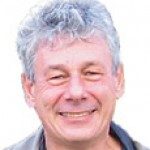Link to Pubmed [PMID] – 15015740
Semin. Cell Dev. Biol. 2003 Dec;14(6):331-40
Controlling gene expression is one of the most fundamental task of living organisms, from prokaryotes to higher eukaryotes, in order to develop, grow, and reproduce in an ever changing environment. In many cases, the expression status of a given gene is controlled independently of that of its neighbours through localised cis DNA elements responsible for the recruitment of specific factors and enzymatic activities. However, in a growing number of cases, genomic regions including several genes have been shown to be regulated in a coordinated manner. X-chromosome inactivation, the dosage compensation mechanism encountered in mammals, is one of the most Striking example of such coordinated gene regulation. This process, which occurs at the chromosome-wide level, affecting many hundreds of genes, is under the control of a unique, cis acting region, termed the X-inactivation centre, whose complexity is just beginning to be unravelled.
